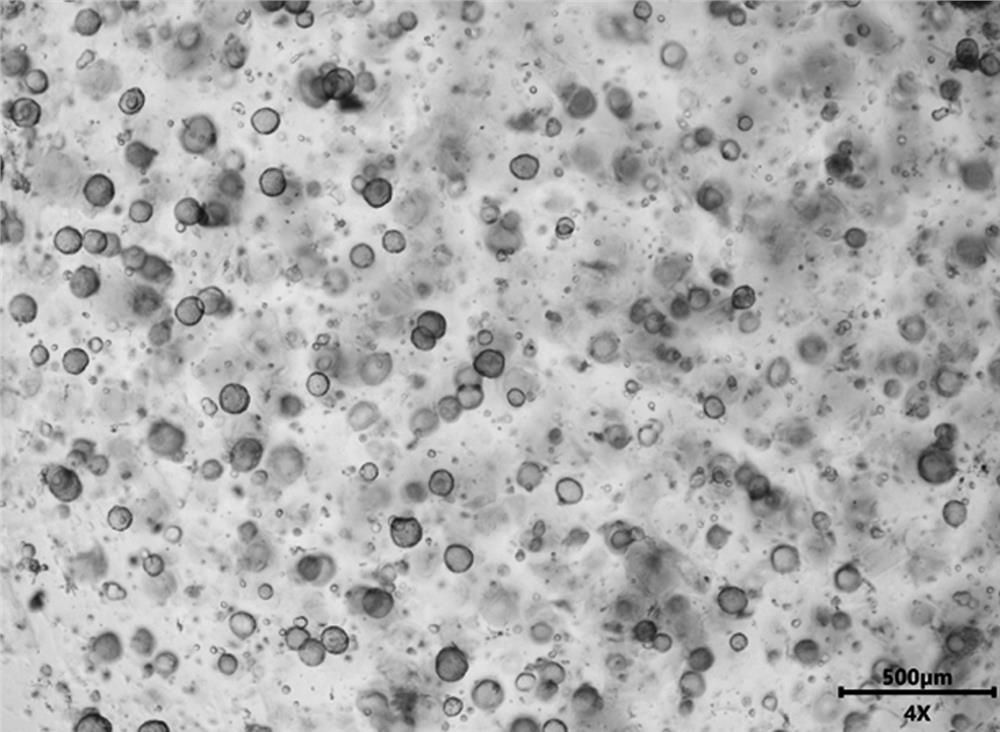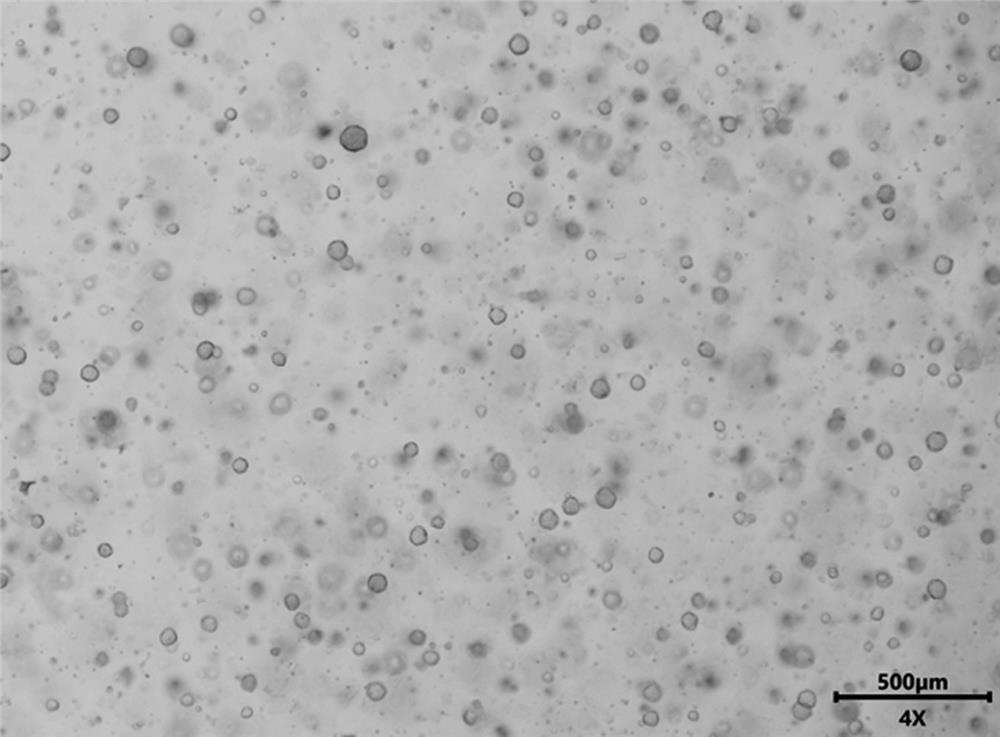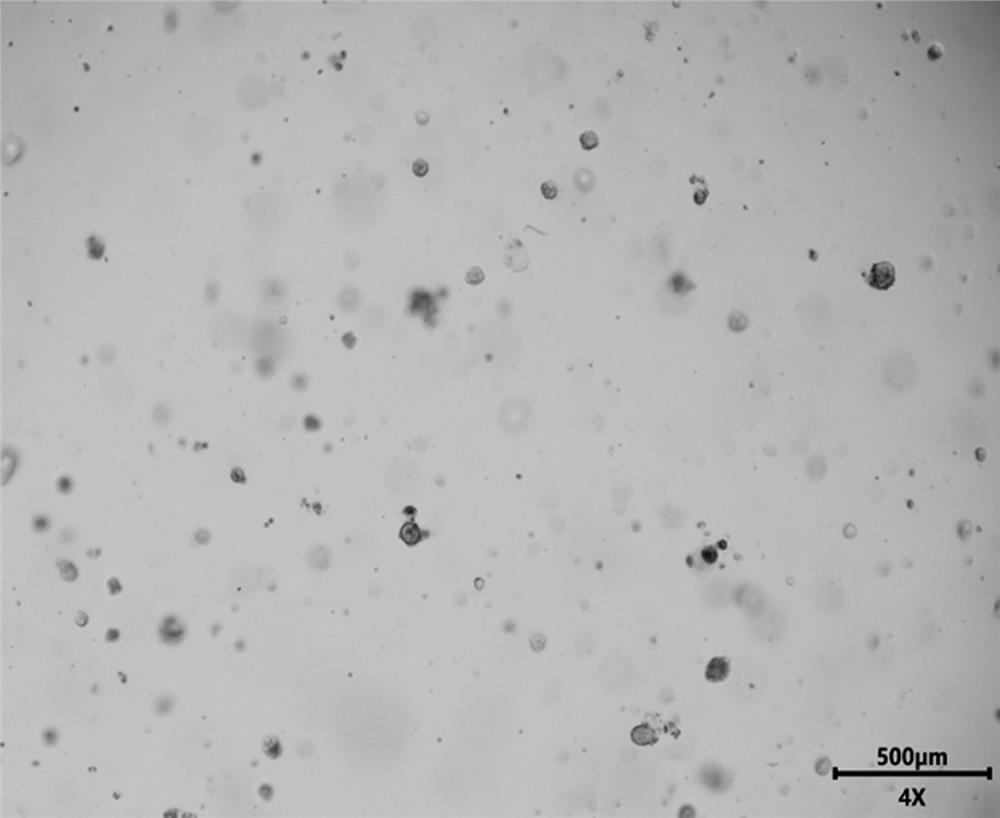Culture medium and culture method for esophageal cancer tumor organoid culture
A culture method and technology for esophageal cancer, applied in the field of organoid culture, can solve the problems of slow growth of organoids, low culture success rate, long culture cycle, etc., to increase the number and survival rate, inhibit apoptosis, increase the number of production and The effect of viability
- Summary
- Abstract
- Description
- Claims
- Application Information
AI Technical Summary
Problems solved by technology
Method used
Image
Examples
Embodiment 1
[0049] A culture medium for esophageal cancer organoids, the culture medium is composed of Advanced DMEM / F12 basal medium and specific addition factors 1×Glutamax (2mmol / L), 1×HEPES (10mmol / L), 1mmol / L N- Acetylcysteine, 10mmol / L Nicotinamide, 1×Penicillin-Streptomycin (0.1mg / mL), 1×B27, 10mmol / LSB202190, 500nmol / L A8301, 100μmol / L Gastrin, 100ng / mL R-spondin1, 100ng / mLNoggin, 50ng / mL EGF, as well as RKI-1447 and Zeaxanthin dipalmitate, where the concentration of RKI-144 was 100μmol / L and the concentration of Zeaxanthin dipalmitate was 5mmol / L.
[0050] A method for culturing esophageal cancer organoids, comprising the following steps:
[0051] 1) Obtain fresh esophageal cancer tissue (from Hangzhou Cancer Hospital, Ethics Committee: Hangzhou Cancer Hospital Ethics Committee, approval number: HZCH-2022), rinse repeatedly in pre-cooled PBS to remove obvious blood stains on the tissue.
[0052] 2) Cut it into pieces with scissors, transfer it to a 1.5mL Eppendorf tube, add it ...
Embodiment 2
[0060] Effects of different concentrations of RKI-1447 and Zeaxanthin dipalmitate on the culture of esophageal cancer organoids.
[0061] This Example 2 is basically the same as Example 1, except that the concentrations of RKI-1447 and Zeaxanthin dipalmitate in the esophageal cancer organoid culture medium are different; the details are shown in Table 1 below.
[0062] Table 1
[0063]
[0064] From Table 1 above, it can be seen that different concentrations of RKI-1447 and Zeaxanthin dipalmitate have a great effect on the number and viability of esophageal cancer organoids after culture. When 5 mmol / L was added, the number and viability of organoids could be significantly increased after 6 days of culture, and within this range, the higher the concentration of RKI-1447, the more obvious the effect. It shows that RKI-1447 can promote and inhibit the apoptosis of esophageal cancer organoids under the above addition amount. When the Zeaxanthin dipalmitate concentration was ...
PUM
 Login to View More
Login to View More Abstract
Description
Claims
Application Information
 Login to View More
Login to View More - R&D
- Intellectual Property
- Life Sciences
- Materials
- Tech Scout
- Unparalleled Data Quality
- Higher Quality Content
- 60% Fewer Hallucinations
Browse by: Latest US Patents, China's latest patents, Technical Efficacy Thesaurus, Application Domain, Technology Topic, Popular Technical Reports.
© 2025 PatSnap. All rights reserved.Legal|Privacy policy|Modern Slavery Act Transparency Statement|Sitemap|About US| Contact US: help@patsnap.com



